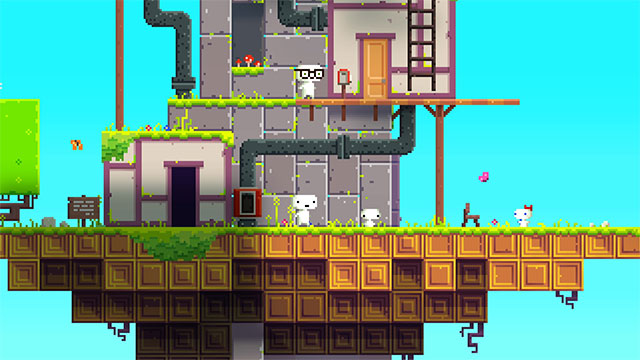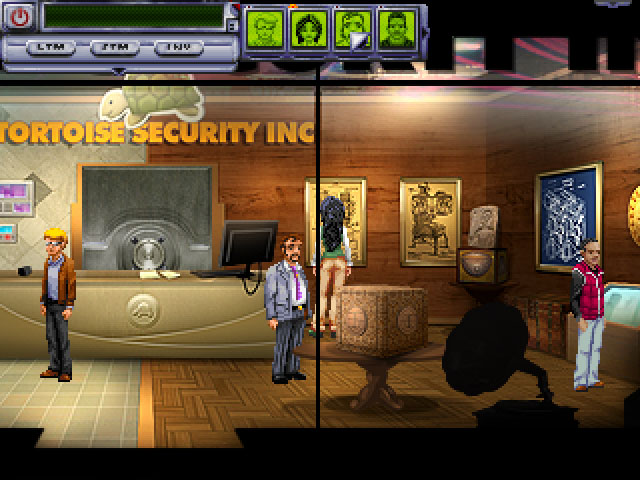As a gamer, I often think to myself how we have almost as many styles of game artwork as we have genres of game. Games themselves being artwork, while hotly contested by some, is readily embraced by people like myself that see awesome people making awesome art into a game. So many of these styles attempt to mimic reality. They want you to believe that the soldier you’re playing as really does have a zit the size of the moon on his face. They want you to believe that the face of the characters you’re talking to aren’t plastic looking and fake. They ask you to suspend your disbelief that what you are doing is not, in fact, real.

FEZ from Polytron. One of my favourite games both in graphics and in gameplay.
Then we have games like FEZ. Gomez, the main character, is a white, blobby looking guy. We know he’s not real. We know this world isn’t real. There is nothing photorealistic about this yet it’s still beautiful and highly detailed. Pixel artwork is often looked at by the mainstream as blocky and unwieldy and something you use when you have a low budget. While it may be relatively “low budget” to the photorealistic approach, pixel art has its own charm and merits. Many successful indie games have used pixel art to achieve their unique styles and, despite what one might think, have a unique look. Pixel art can be as varied and unique as any other style of art and even though it is often associated with cute, cartoony games it can be as dark and dreary as a game like Heavy Rain.

Resonance. An amazing point-and-click thriller from Wadjet Eye.
Resonance, pictured above, is a perfect example of how pixel art can be used to make a game a heavy, unique piece of artwork. The characters are very well detailed and the settings are amazingly intricate. Set pieces like Tortoise Security are often filled with fun things to poke and prod, like that intricate cube sitting on the table right there. The game is also dark and moody, what with it being a thriller and all. Depicting lethal situations involving high science may not sound like it is in the realm of pixel artwork but you should really disabuse yourself of those notions right now. I often found myself just wandering around this game to see more of the world and find hidden puzzles because, frankly, it is gorgeous.
Artistry in pixels has come a long way from the age of Sonic the Hedgehog and Super Mario Bros. It has evolved and changed and grown strange new appendages. What it is today has many varied forms all brought together by the idea that you can make wonderful imagery out of a collection of tiny little squares. Even though many people call pixel artistry “jagged” or “low-resolution” I argue that it is, instead, one of the most interesting forms of visual art that one can find in a game. For all of its limits and all of its challenges it still pulls us out of the real and into the art and imagination of the artists crafting the adventures we undertake.
 …WOOLY DESERVES BETTER LOL!
…WOOLY DESERVES BETTER LOL!